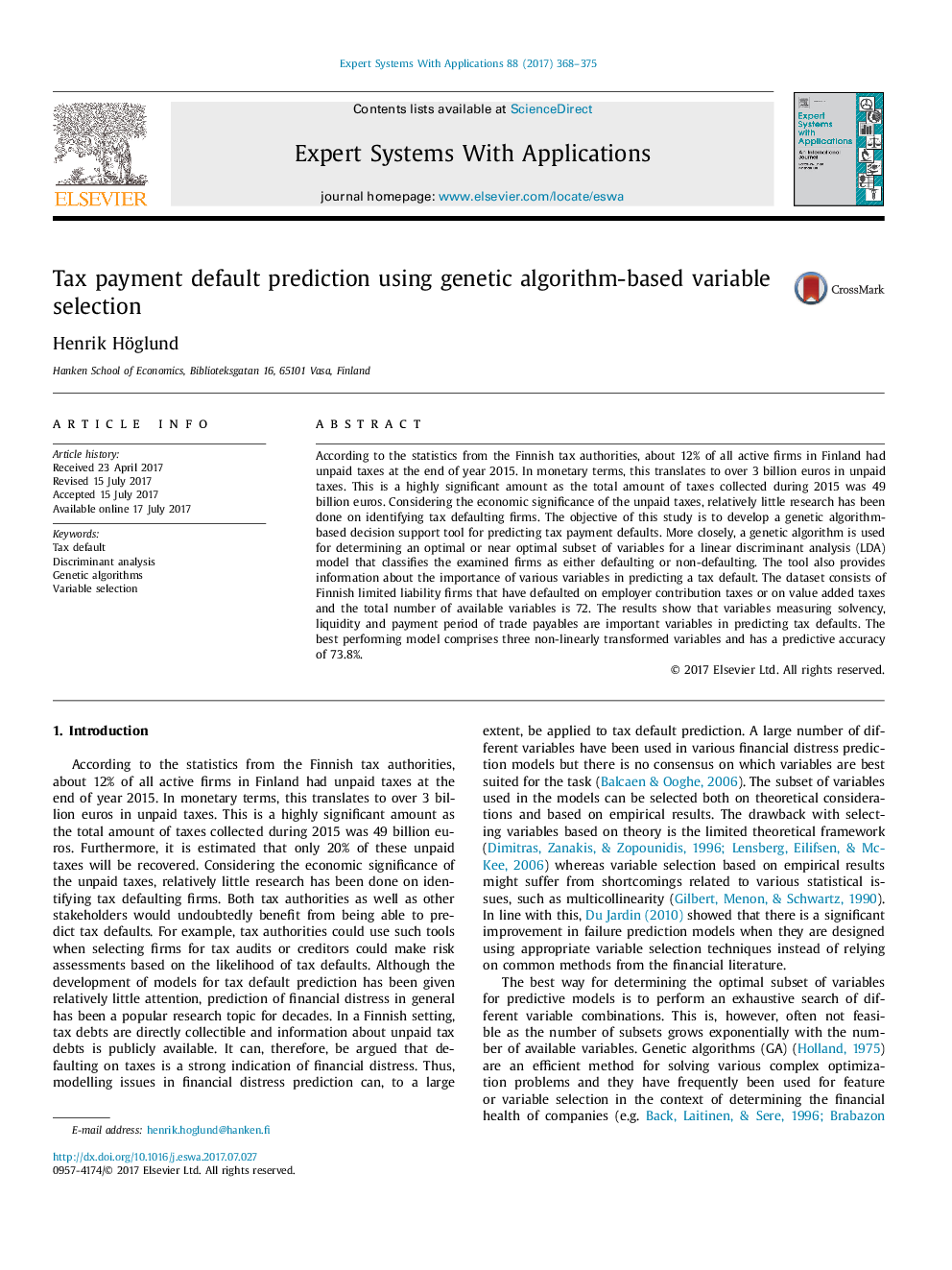ترجمه فارسی عنوان مقاله
پیش بینی پیش فرض پرداخت مالیات با استفاده از انتخاب متغیر مبتنی بر الگوریتم ژنتیک
عنوان انگلیسی
Tax payment default prediction using genetic algorithm-based variable selection
| کد مقاله | سال انتشار | تعداد صفحات مقاله انگلیسی |
|---|---|---|
| 92861 | 2017 | 8 صفحه PDF |
منبع

Publisher : Elsevier - Science Direct (الزویر - ساینس دایرکت)
Journal : Expert Systems with Applications, Volume 88, 1 December 2017, Pages 368-375
ترجمه کلمات کلیدی
پیش فرض مالیات، تجزیه و تحلیل دائمی، الگوریتم ژنتیک، انتخاب متغیر،
کلمات کلیدی انگلیسی
Tax default; Discriminant analysis; Genetic algorithms; Variable selection;

